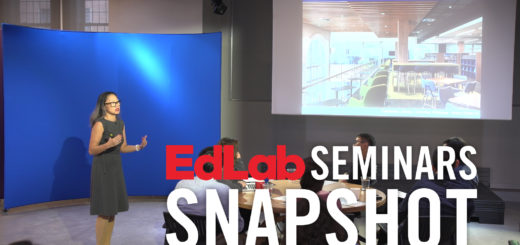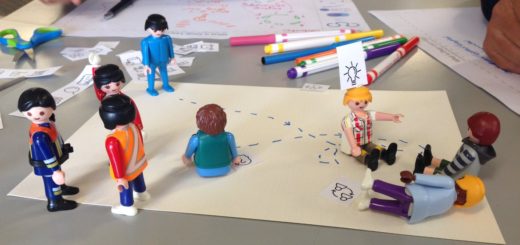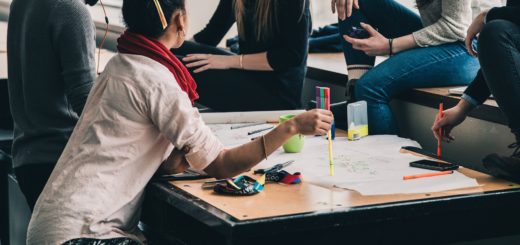Getting beyond the design of school learning environments to focus on what matters the most – teaching and learning
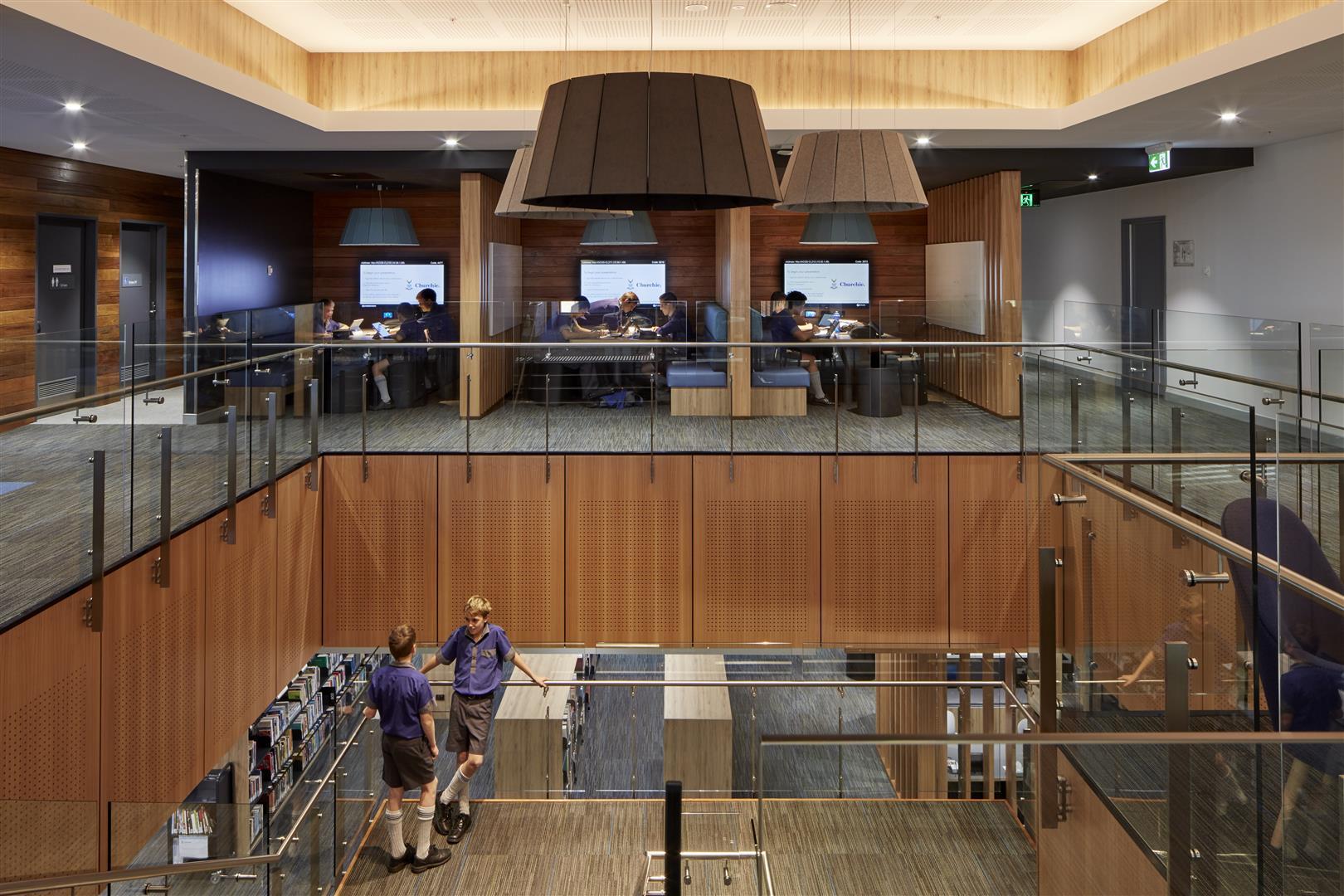
A guest post by Dr Terry Byers summarising findings from research and initiatives at Anglican Church Grammar School (Churchie) in Brisbane, Australia to evaluate and support teachers’ transition from traditional to innovative learning spaces…

Dr Terry Byers is Director of the Churchie Centenary Library and Research Fellow with the ILETC Project, University of Melbourne
It is fair to say that of the various factors that mediate the success of any learning environment (traditional/convention or ILE), that design dominates the current conversation. The overt focus on design, or the more formal definition of architectural determinism, suggests that the design of space ‘will’ impact the behaviour of its occupants. Such an orientation, often lauded/envisioned by those who rarely ‘use’ (i.e. academics, architects, bureaucrats, consultants and leaders) these spaces, suggest that existing classrooms are in some way not suitable for education today (but as the ILETC project has found, there is limited evidence to support this assertion). So, by changing the nature of the physical learning environment, we rely on architectural ‘possibilism’ and ‘probabilism’ as intervention/s that will affect the desired pedagogical use (at great human and financial investment)
However, as the work of the ILETC project continues to illuminate, the evidence-base that supports this narrative is flimsy (at best). The project has highlighted that the impact of any environment is heavily dependent on a multitude of factors that extend well beyond design (i.e. context, leadership, consultative process, curriculum, professional development, affordance theory, etc.), with little consideration given to the support structures around or effects of the transition from existing spaces to ILEs
The recent ILETC systematic review of different school learning spaces on academic/learning outcomes found (Byers, Imms, Mahat, Liu, & Knock, 2018) like the earlier work of Blackmore, Bateman, O’Mara, and Loughlin (2011) found few reliable, rigorous empirical studies. Importantly, the review highlighted the pressing lack of robust and valid instruments/studies able to discern the occupation of different spaces and the incidence/effect of those 21st Century competencies. Many have hedged the current design narrative upon the hypothesis of contemporary school spaces to affect a reconceptualisation of learning that is thought to ‘better’ prepare students for their future; but again this is an under-evaluated concept.
Back in 2010, the Anglican Church Grammar School (Churchie) in association with Associate Professor Wes Imms decided to move beyond conjecture to investigate the space, pedagogy and learning interplay. The findings from 2 research studies conducted in the school have recently been published in academic journals and are also summarised in ‘The Finished Beginning’ report. The New Generation Learning Spaces (NGLS) initiative seeks to create/trial/refine those methods and measures that would produce the evidence that would better inform the school’s strategic building program that culminated in the Centenary Library. Two journal articles have just been published on this work in Studies in Educational Evaluation:
The findings from this year-long quasi-experimental study explored the claim that different classroom layouts (traditional and retrofitted cellular space in the premise of an ILE) can affect teaching and learning. It compared attitudes to their learning experiences, motivation, engagement and academic outcomes of three student groups (ILE intervention n = 116; ILE control n = 120; and traditional control n = 149).
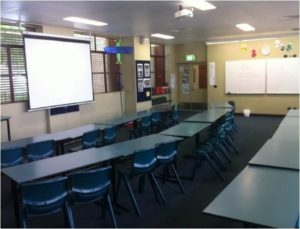
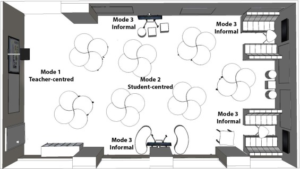
Figure 1: Traditional (left) and retrofitted (right) spaces
The key findings were:
- Students’ attitudes to the nature of the learning experiences and engagement differed in the two classroom layouts.
- Students in the retrofitted layout reported a higher incidence of student-centric modalities of learning (i.e., active learning; collaboration; independent creativity and personalisation through formative feedback) than their peers experienced in a traditional layout.
- A correlation (by effect size and hierarchical linear modelling) identified changes in student attitudes in the retrofitted layout and higher English (avg g = .46), Humanities (avg g = .30) and Mathematics (avg g = .46) academic achievement when compared with cognitively matched peers who occupied a traditional classroom for the same period (average variance of 6 to 7%).
The study illuminated that change in spatial design, by itself, makes a small difference. The mediating variable of teacher environmental/spatial competency (Lackney, 2008) best explained how changes by particular teachers, in their behaviours and pedagogies, tranlsated to greatest statistical effects.
The Creative Precinct convert two adjoining buildings/faculties into one pedagogical space. The year-long consultative process, design and fit-out served as a dress rehearsal for the strategic Centenary Library. The 2013-2015 study followed Creative Arts and Design and Technology teachers from the transition from existing studios/workshops (baseline A-phase) to inhabit (first 6 months B-phase) and longer-term occupation (12 months later C-phase).

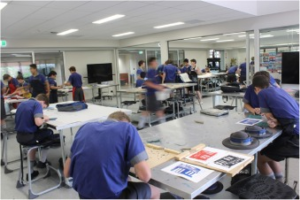
Figure 2: Visual Art before (left) and after (right) the move into the Creative Precinct
At the time (study went from 2013-2015), there was limited professional learning, and post-occupancy measures were deemed inept to unpack how such a spatial change would affect, or not, teaching and learning. The study used the Linking Pedagogy, Technology and Space (LPTS) observational metric through a single subject research design (SSRD) to understand how teachers, and their students, transitioned from traditional spaces to occupy an ILE based on measurement of time (see Byers, 2017 for conceptual development).

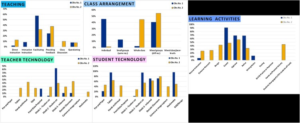
Figure 3: Linking Pedagogy, Technology and Space (LPTS) metric observer interface (left) and visual output (right)
The key findings were:
- For the first time, the metric was able to track how teachers trialled, refined and shaped their practice to utilise the affordances presented by the Creative Precinct’s design and fit out.
- The visual analysis of the metric’s data detailed the changes in teachers’ environmental/spatial competency; some teachers (for reasons that are being investigated at Churchie now) were able to make changes more readily than the peers. Over the two-year period, teachers refined the nature of didactic and teacher-centric whole class instruction to much shorter and focused on its intent. Teachers noted this improved its effectiveness. In its place was an increased prevalence of more responsive and active pedagogies facilitated the affordances of multiply connected spaces.
- Unlike the blunt intervention of open-plan, teachers were able to use the buildings design/layout to easily shape communities of learning from own/mixed class through to small group and individual learning (while moderating the critical elements of acoustics and sight lines).
The study’s longitudinal design, engagement with teachers and analysis of the LPTS data, it was clear that the Creative Precinct exceeded its educational brief. Unlike existing POEs and evaluation techniques (unable to discern the broad and dynamic nature of teacher pedagogical practice), this study illuminated how the changes made by teachers to exploit (or not) the affordances of the building intertwined with their expertise and practice. The result was enhance student learning (without drastic and imposed changes to timetable, subject structures, curriculum and assessment) and academic outcomes (see Finished Beginning for impact on Year 12 ATAR subjects).
Summary
The success of the NGLS project at Churchie is its consultative process with and the development of teachers, and not some trendy design or nebulous concept of 21st century learning. Both studies highlighted that teachers did not reject existing pedagogies and practices; they adapted and refined them. Yes, there were more responsive pedagogies with more significant levels of activity differentiation that engendered greater incidence of deep learning.
By working with teachers at the coalface, rather than external experts lecturing them on what they should do, we have seen the significant professional growth that has led to a transformation of learning. Without lamenting all the things that are ‘bad’ with schools, our staff work within the ‘rules of schools’ (Tyack & Tobin, 1994) to create an environment that has had a significant and longitudinal effect on improving academic outcomes for all students.
Reference List
Blackmore, J., Bateman, D., O’Mara, J., & Loughlin, J. (2011). Research into the connection between built learning spaces and student outcomes: Literature review. Melbourne: Victorian Department of Education and Early Childhood Development Retrieved from http://www.eduweb.vic.gov.au/edulibrary/public/publ/research/publ/blackmore_learning_spaces.pdf.
Byers, T. (2017). Development of the linking pedagogy, technology and space observational metric. In B. Cleveland, H. Mitcheltree, & W. Imms (Eds.), What’s Working? 2016: Informing Education Theory, Design and Practice Through Learning Environmental Evaluation (pp. 77-88). Melbourne: Learning environments applied research network.
Byers, T., Imms, W., & Hartnell-Young, E. (2018a). Comparative analysis of the impact of traditional versus innovative learning environment on student attitudes and learning outcomes. Studies in Educational Evaluation, 58, 167-177. doi:10.1016/j.stueduc.2018.07.003
Byers, T., Imms, W., & Hartnell-Young, E. (2018b). Evaluating teacher and student spatial transition from a traditional classroom to an innovative learning environment. Studies in Educational Evaluation, 58, 156-166. doi:10.1016/j.stueduc.2018.07.004
Byers, T., Imms, W., Mahat, M., Liu, K., & Knock, A. (2018). A systematic review of the effects of learning environments on student learning outcomes. Innovative Learning Environments and Teachers Change. doi:10.13140/RG.2.2.23918.10561
Lackney, J. A. (2008). Teacher environmental competence in elementary school environments. Children, Youth and Environments, 18(2), 133-159.
Tyack, D., & Tobin, W. (1994). The “grammar” of schooling: Why has it been so hard to change? American Educational Research Journal, 31(3), 453-479. doi:10.3102/00028312031003453

